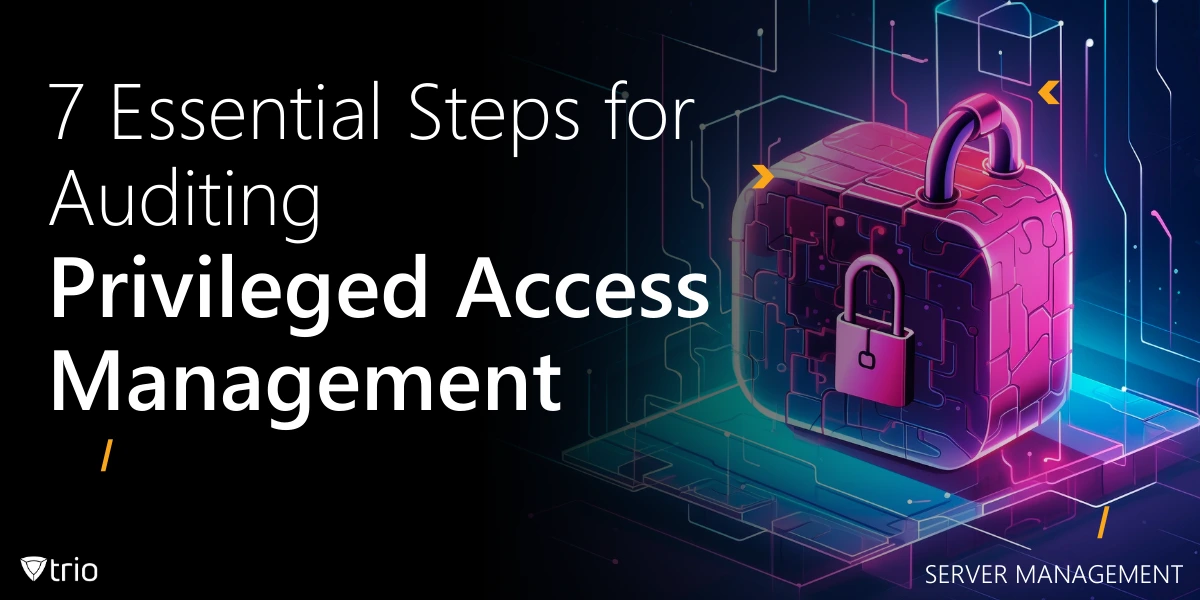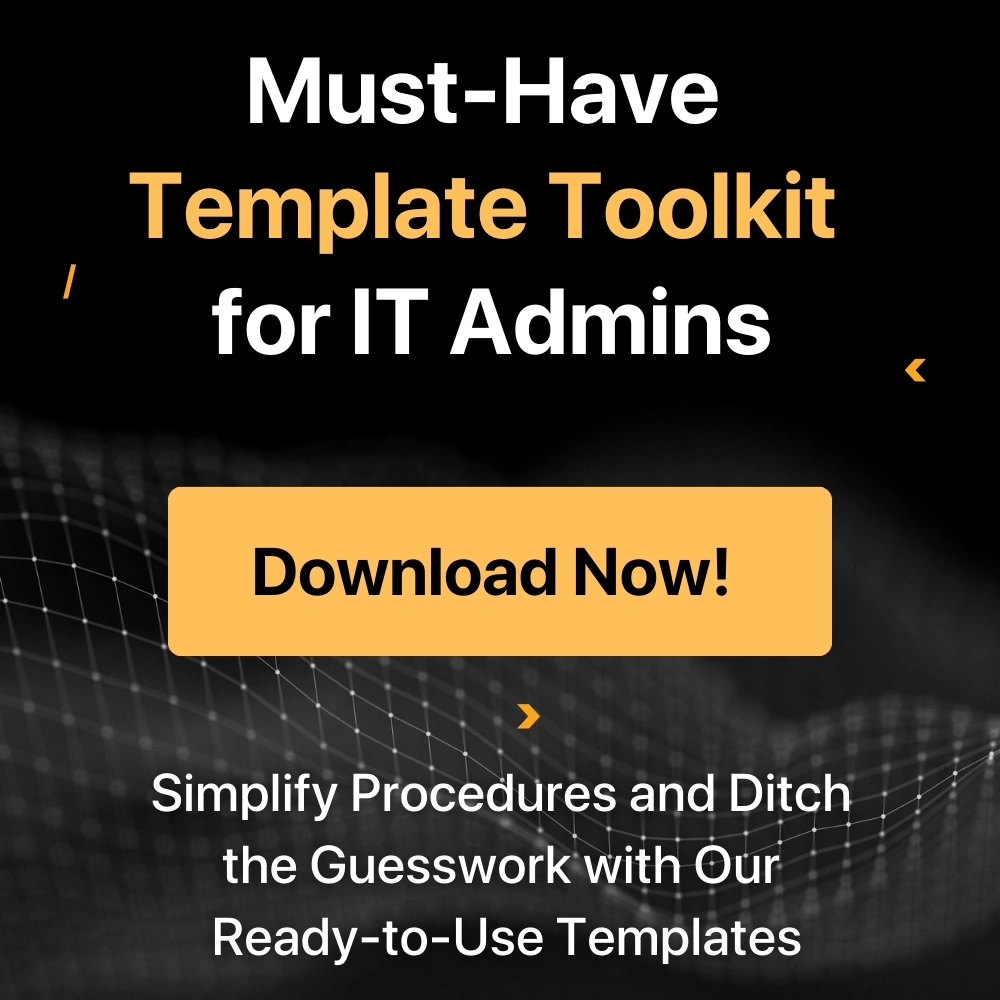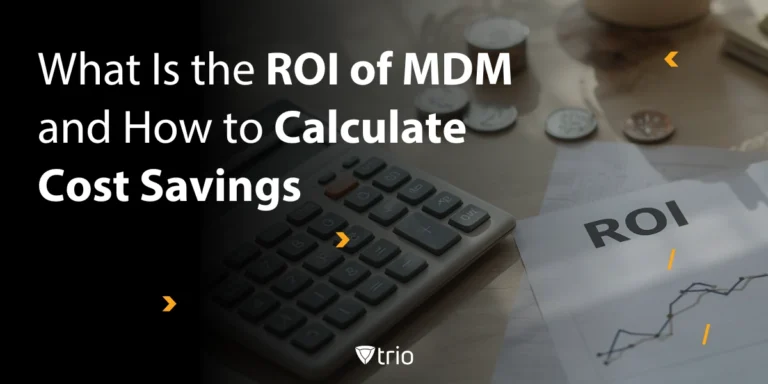Whit cyber threats constantly evolving, auditing privileged access management (PAM) has become a critical component of organizational security. By implementing a robust PAM audit process, companies can significantly reduce the risk of data breaches, insider threats, and unauthorized access to sensitive information. This blog post will guide you through seven essential steps for auditing privileged access management, ensuring your organization maintains a strong security posture.
1. Establish a Comprehensive Inventory of Privileged Accounts
The first step in auditing privileged access management is to create a complete inventory of all privileged accounts within your organization. This includes:
- Administrator accounts
- Service accounts
- Application accounts
- Emergency access accounts
- Tip: Use privileged access management tools to automatically discover and catalog privileged accounts across your network. This ensures no account is overlooked during the audit process.
2. Review and Validate Access Rights
Once you have a comprehensive inventory, it’s crucial to review and validate the access rights associated with each privileged account. This step involves:
- Assessing whether current access levels are appropriate
- Identifying any unnecessary or outdated privileges
- Ensuring the principle of least privilege is applied
Best Practice: Implement a regular review cycle as part of your privileged access audit program to maintain accurate and up-to-date access rights.
3. Analyze User Activity and Behavior
Monitoring and analyzing user activity is a critical component of auditing privileged access management. This step helps identify potential security risks and unusual behavior patterns. Key activities to monitor include:
- Login attempts and successes
- Command executions
- File access and modifications
- Network activity
Tool Recommendation: Utilize advanced privileged access management solutions that offer real-time monitoring and anomaly detection capabilities.
4. Evaluate Password and Authentication Policies
Strong authentication is crucial for protecting privileged accounts. During your audit, assess the following aspects of your authentication policies:
- Password complexity requirements
- Multi-factor authentication implementation
- Password rotation schedules
- Use of privileged access management tools for password vaulting
Checklist Item: Ensure your privileged access management audit checklist includes a thorough review of authentication methods and their effectiveness.
5. Assess Session Recording and Monitoring
Session recording and monitoring are essential for maintaining accountability and detecting potential security breaches. Your audit should evaluate:
- The effectiveness of session recording tools
- Storage and retention policies for recorded sessions
- Access controls for session logs and recordings
Best Practice: Implement privileged access management solutions that offer robust session recording and playback features for comprehensive auditing.
6. Review Compliance with Regulatory Requirements
Many industries are subject to specific regulations regarding privileged access management. Your audit should ensure compliance with relevant standards, such as:
- GDPR
- HIPAA
- PCI DSS
- SOX
Tip: Develop a privileged access audit program that aligns with your industry’s regulatory requirements to streamline compliance efforts.
7. Conduct Regular Penetration Testing
To truly assess the effectiveness of your privileged access management practices, it’s crucial to perform regular penetration testing. This involves:
- Simulating real-world attack scenarios
- Identifying vulnerabilities in your PAM infrastructure
- Testing the effectiveness of your security controls
Best Practice: Incorporate both internal and external penetration testing as part of your privileged access management audit process.

Implementing Your Audit Findings
After completing these seven essential steps for auditing privileged access management, it’s crucial to act on your findings. This may involve:
- Updating policies and procedures
- Implementing new privileged access management tools
- Providing additional training to staff
- Enhancing monitoring and alerting systems
Remember, auditing privileged access management is an ongoing process. Regular audits help ensure that your organization maintains a strong security posture and adapts to evolving threats.
The Future of Auditing Privileged Access Management
As technology continues to evolve, so too will the landscape of privileged access management and the auditing processes that support it. Here are some key trends and developments to watch for in the future of PAM auditing:
1. AI and Machine Learning Integration
Artificial Intelligence (AI) and Machine Learning (ML) are set to revolutionize PAM auditing. These technologies will enable:
- More accurate anomaly detection in user behavior
- Predictive analysis to identify potential security risks before they occur
- Automated response to suspicious activities
- Continuous learning and adaptation to new threat patterns
2. Zero Trust Architecture
The Zero Trust model is gaining traction in cybersecurity, and it will significantly impact PAM auditing. Future audits will need to focus on:
- Verifying the implementation of “never trust, always verify” principles
- Assessing the effectiveness of continuous authentication and authorization
- Evaluating micro-segmentation strategies
3. Cloud-Native PAM Solutions
As more organizations move to the cloud, PAM auditing will need to adapt. Future audits will likely involve:
- Assessing cloud-specific privileged access controls
- Evaluating integration between on-premises and cloud PAM solutions
- Verifying compliance with cloud service provider security requirements
4. Biometric Authentication
Biometric authentication is becoming increasingly sophisticated and widely adopted. Future PAM audits will need to:
- Assess the security of biometric data storage and processing
- Evaluate the effectiveness of multi-factor authentication combining biometrics with other factors
- Ensure compliance with privacy regulations related to biometric data
5. Quantum-Safe Cryptography
As quantum computing advances, current encryption methods may become vulnerable. Future PAM auditing will need to:
- Verify the implementation of quantum-resistant encryption algorithms
- Assess the organization’s readiness for the post-quantum cryptography era
- Evaluate key management practices in light of quantum computing threats
6. Internet of Things (IoT) Integration
The proliferation of IoT devices introduces new privileged access challenges. Future PAM audits will need to:
- Identify and assess privileged access to IoT devices and gateways
- Evaluate security measures for IoT-generated data
- Ensure proper segmentation of IoT networks
7. Blockchain for Immutable Audit Trails
Blockchain technology could revolutionize how audit trails are maintained. Future PAM auditing might involve:
- Assessing the integrity of blockchain-based audit logs
- Evaluating the effectiveness of smart contracts in enforcing access policies
- Verifying the decentralization and immutability of audit records
As these technologies and trends evolve, organizations will need to adapt their privileged access management audit programs accordingly. Staying ahead of these developments will be crucial for maintaining robust security in an increasingly complex digital landscape.
Enhance Your Privileged Access Management with Trio
As you work to improve your privileged access management practices, consider leveraging Trio’s mobile device management solution. Trio offers a comprehensive approach to securing privileged access across mobile devices, which is increasingly important in today’s remote work environment.
Trio’s solution can help address many of the challenges discussed in this blog post, including:
- Automated discovery and management of privileged accounts on mobile devices
- Strong authentication and access controls
- Real-time monitoring and alerting for suspicious activities
- Compliance with industry regulations
By incorporating Trio into your privileged access management strategy, you can significantly enhance your organization’s security posture and streamline your audit processes.
Ready to take your privileged access management to the next level? Try Trio’s free demo today and experience the benefits of robust mobile device management in your PAM strategy.
Conclusion
Auditing privileged access management is a critical process that safeguards your organization's most sensitive assets and data. By following these seven essential steps - from establishing a comprehensive inventory to conducting regular penetration testing - you can significantly enhance your security posture and mitigate potential risks associated with privileged accounts.
Remember, effective PAM auditing is not a one-time event but an ongoing process. It requires continuous attention, regular updates, and a commitment to best practices. As cyber threats evolve, so too must your approach to privileged access management.
Implementing robust PAM audit procedures not only strengthens your security defenses but also ensures compliance with industry regulations. It provides visibility into user activities, helps detect anomalies, and ultimately protects your organization from both internal and external threats.
By leveraging advanced PAM tools and solutions like Trio's mobile device management, you can streamline your audit processes and adapt to the challenges of securing privileged access in an increasingly mobile and remote work environment.
Take the first step towards enhancing your organization's security today. Start implementing these auditing steps, and consider how tools like Trio can support your privileged access management strategy. Your proactive approach to PAM auditing will pay dividends in maintaining the integrity and security of your critical systems and data.
Get Ahead of the Curve
Every organization today needs a solution to automate time-consuming tasks and strengthen security.
Without the right tools, manual processes drain resources and leave gaps in protection. Trio MDM is designed to solve this problem, automating key tasks, boosting security, and ensuring compliance with ease.
Don't let inefficiencies hold you back. Learn how Trio MDM can revolutionize your IT operations or request a free trial today!





